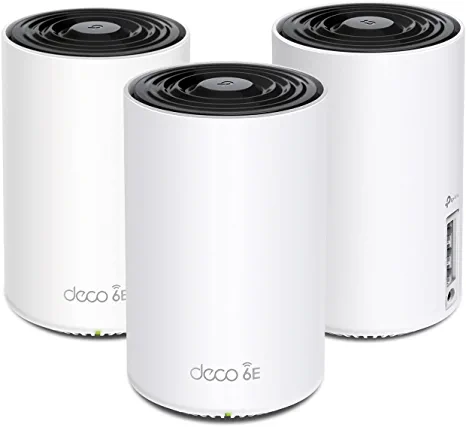You’ve probably noticed that TP-Link has already announced a couple of Wi-Fi 7 tri-band routers and may be thinking of upgrading your network, especially if you would no longer need Ethernet cabling throughout your office or home. But do you need to pay the price premium for Wi-Fi 7 or will Wi-Fi 6 – the 2019 standard – suffice for your requirements?
When Wi-Fi 6 was introduced, it promised faster speeds: almost 3x faster than Wi-Fi 5. It was also the first Wi-Fi standard to communicate with multiple devices concurrently, rather than in sequence.
More specifically, an upgraded MU-MIMO (multi-user, multiple input, multiple outputs) doubled the number of device access point radios that were now able to communicate with the router. Plus, a new standard of orthogonal frequency division multiple access (OFDMA) allowed one transmission to deliver data to multiple devices at the same time. By the way, one of the rules of thumb of judging the capacity of a router is counting the number of antennas: the more antennas, the more users can “talk” at the same time using the MU-MIMO technology
Wi-Fi 6 also utilized auto-channel switching. While it has two independent radios each supplying up to 160 MHz of bandwidth (not frequency), it can switch down to 20, 40, or 80 MHz depending upon individual device requirements. Thus, again maximizing the efficiencies of communication with multiple devices. Thus, Wi-Fi 6 routers – including mesh devices – can easily handle 40 devices running concurrently.
There is an intermediate standard named Wi-Fi 6e. It enables the third spectrum of 6 GHz (in addition to 2.4 GHz and 5 GHz) and uses this spectrum to add several extra 160Mhz bandwidths.
So, what difference can we expect from the new Wi-Fi 7 standard that will begin rolling out in the new year? The Wi-Fi 6 maximum speed for a single device is 9.6 Gbps while Wi-Fi 7 is expected to have a maximum speed of 46 Gbps for a single client.
The Bottom Line
Wi-Fi 6e routers are very affordable with prices of less than $500 for a three-unit mesh pack covering a 7,000-square-foot office. For example, the TP-Link Deco XE75 currently retails at $350, while the Linksys MX8502 Atlas currently goes for $650. These will more than suffice for a typical SMB office. The greater bandwidth (speeds) offered by Wi-Fi 7 are rarely if ever going to be utilized in an office environment. So, go for a Wi-Fi 6e router or mesh system. And while you’re at it, consider the Verizon Internet Gateway – ideally suited to small and medium-sized businesses. Fixed Wireless Access (FWA) came of age in 2022 and has become a game-changer for businesses that require uninterrupted internet connectivity at a competitive price. You can now ditch your existing ISP.
The Business Internet Gateway is a small box that sits on a shelf, desk, or windowsill. It is self-installed and takes you only minutes to have it up and running in your office. In most areas, you can choose plans from 10Mbps up to 200Mbps, and your router or mesh systems plug directly into one of its ethernet ports without any extra equipment. Get in touch and we’ll introduce you to your local ConectUS Partner.



